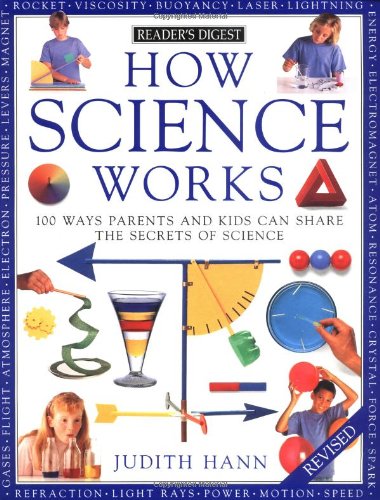-
How science works
John Farndon
Paperback (Readers Digest, July 19, 1999)An exciting and colorfully illustrated collection of one hundred science experiments and projects from a best-selling series offers a unique way for children and parents to come together in a fun exploration of the wonders of science. Reprint. T
T
-
Roller Coasters
Precious Mckenzie
Library Binding (Rourke Educational Media, Aug. 1, 2016)Do you like the feel of wind in your face as you plunge down a steep hill? In this title, learn about roller coasters and the science that makes it all possible. This title supports NGSS standards for engineering design. N
N
-
How the Earth Works
John Farndon
Paperback (Dorling Kindersley Publishers Ltd, Aug. 26, 1999)Focusing on questions about the earth such as "What lies at the centre of the Earth?", "Why do continents move?" and "Why do rivers bend?" this book features simple, hands-on experiments and projects which use safe everyday equipment that let the reader discover for themselves the way the Earth works. It is also possible to create your own "home laboratory" with everyday materials from your home and garden. Y
Y
-
The World of Plant Life
Gerald Legg
Paperback (Award Publications, Aug. 16, 2002)In The World of Plant Life, young readers will learn about the parts of a plant, the different ways plants reproduce, and how plants grow. they will explore such processes as photosynthesis, pollination, and fertilization, and they will examine an amazing variety of plants, which thrive in such diverse environments as deserts, mountains, oceans, and rain forests. From plants that eat insects to trees that tower hundreds of feet overhead, this book provides an entertaining and informative look at the world of plants.
-
Microwave Ovens
Cristie Reed
Paperback (Rourke Educational Media, Aug. 1, 2014)Did you know the microwave oven was actually invented by mistake? While experimenting with electricity, a scientist noticed the chocolate snack he had in his pocket actually melted. This led to the technology that has made cooking faster, more convenient, and used more than conventional cooking. This book addresses the differences between a standard oven, which uses conduction, and a microwave oven, which uses microwaves, causing food molecules to move, creating heat. This book will allow students to plan and conduct an investigation to determine the effect of placing objects made with different materials in the path of a beam of light.Filled with full-color photographs and reading comprehension activities, this book effectively engages students and complements the research of how an important piece of technology works. Microwave Ovens allows students to make observations and gather information about a simple problem that can be solved through the development of a new or improved object or tool.Each 24-book features a teacher-focused concept, before- and after-reading activities, a photo glossary, and more, for a well-rounded understanding of the topic. The How It Works series lets young readers explore and research the technology and design of important, everyday things and how they are engineered. With simple-to-follow text and full-color photographs, these books easily engage young learners to discover the inner workings of complex objects and concepts. J
J
-
How it Works Military Machines
Steve Parker
Paperback (Miles Kelly Publishing Ltd, )None
-
Creature Features
Anita Ganeri, Steve Fricker
Library Binding (Simon & Schuster Children's Publishing, May 1, 1997)Describes animals and how their bodies work, focusing on animals with unusual characteristics P
P
-
Funny Bones and Other Body Parts
Anita Ganeri, Steve Fricker, John Holder
Library Binding (Simon & Schuster Children's Publishing, May 1, 1997)An easy-to-understand, informative portrait of the human body contains full-color spreads that explain such functions as eating and digestion, the flow of blood through the veins and arteries, and many others. O
O
-
Drones
Jodie Mangor
Library Binding (Rourke Educational Media, Aug. 1, 2016)Drones are unmanned flying machines that have many uses from scientific studies, to military, to recreation and fun. Learn how drones work and what these amazing machines can do. This title supports NGSS standards for engineering design. T
T
-
The Hovercraft
Alan Blunden
Hardcover (Ladybird Books, June 1, 1987)The Hovercraft (How It Works) Ladybird Books Series 654
-
The Human Body
Kate Barnes
Paperback (Award Childrens Books, Dec. 1, 2002)Great Book, you should buy it now!
